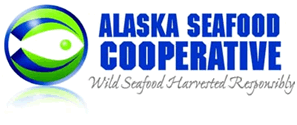SEAFOODNEWS.COM [Opinion], March 31, 2015
By Bill Hayes (part 1)
Bill Hayes is captain on the Vaerdal, a 124-foot catcher processor owned by United States Seafoods, one of the larger companies in the Amendment 80 Coop. As the Council begins working on draft documents about halibut by catch, a number of Amendment 80 Captains have been publicly testifying about their need for halibut and their view of the history of their halibut bycatch allocations. The Opinion piece below, which we will run in two parts, is based on Bill Hayes’ testimony before the council in January.
I have participated in the groundfish fisheries from the very beginning. After starting my career crabbing, I moved to a Joint Venture catcher boat in 1983 before being hired on to captain the Vaerdal, a 124 foot trawl catcher/processor in 1986. I have worked there ever since (closing in on 30 years). I’ve been part of the agony and ecstasy of an industry that has gone through extraordinary changes. Extra ordinary has been our response to changing regulatory requirements.
In 1988, when halibut bycatch quotas were initiated for the trawl fleet, we lobbied for a cap that would float based on the biomass of the halibut stock. That was summarily dismissed and a fixed, hard cap was instituted. It was anathema to the halibut interests that our fleet might benefit from a potential increase in the stock. It was much easier to pick a number and call it good.
Of course, now that stocks are falling, we’re hearing a very different story. While a fixed cap might insulate the halibut fishery from trawlers in a rising biomass, it also insulates trawlers from any effect they have on the biomass. That’s not good for anyone, especially trawlers.
Through the 90’s and early 2000’s, halibut constrained flatfish harvests. It was a race for bycatch, not target species, often driven by a few bad players who disregarded bycatch and others’ interest in a longer fishing season.
Our bycatch avoidance efforts finally started to be rewarded in 2008, when the North Pacific Council rationalized the Bering Sea multispecies fisheries under Amendment 80, allocating a specific share of each target and bycatch species to each boat. It has been an unreserved success. As our fleet continued to invent ways to avoid halibut, our bycatch rates have declined to near 6kg per ton of groundfish (a half of a percent) – a rate comparable to any other Pacific fishery, including the British Columbia trawl fishery that is often held up as the model by the Halibut Commission.
Our coop has used a variety of measures to minimize halibut bycatch. We choose fishing time and location based on our experience and information from other boats; we use halibut excluders that allow halibut to avoid capture; and we have real-time catch monitoring to identify bycatch hotspots.
That all sounds good but it doesn’t tell the true story of the time, effort, and cost that America’s Amendment 80 fishermen have devoted to bycatch avoidance, the complexity of which makes other fisheries look like a walk in the park.
Captains choose where to fish based on years of experience and knowledge of where halibut bycatch occurs. Our decisions are based on that we see, as well as what we hear from other boats. These communications are a part of our daily lives on the water and essential to what it is to be a co-op.
I have built and used numerous halibut excluders. I regularly modify them in an attempt to save a few more halibut. While my boat has spent hundreds of thousands of dollars on excluders, I have lost much more than that in target flatfish I didn’t catch when my ideas didn’t pan out. The excluder now favored by the rest of the fleet can barely be towed by my small horsepower boat but I would not leave town without one…or two. Excluders work some of the time but can be totally ineffective at other times, so they are not the only answer.
Our fleet catches over 160 pounds of groundfish for every pound of halibut bycatch. That’s 160 people we feed for each meal of halibut lost to our bycatch. Those 160 people who won’t get that meal are the true losers if the Council chooses the simple path of just cutting our bycatch number. It’s to those people that the Council owes the most. With that much at stake, you can do better than a simple cut in the number. Our sector has a record of doing our part – give us rules that give us a chance.
My father had a saying: When you come to the end of your rope, tie a knot and hang on. I’m afraid the rope is pulling through our hands too fast and the water’s really deep and cold.
